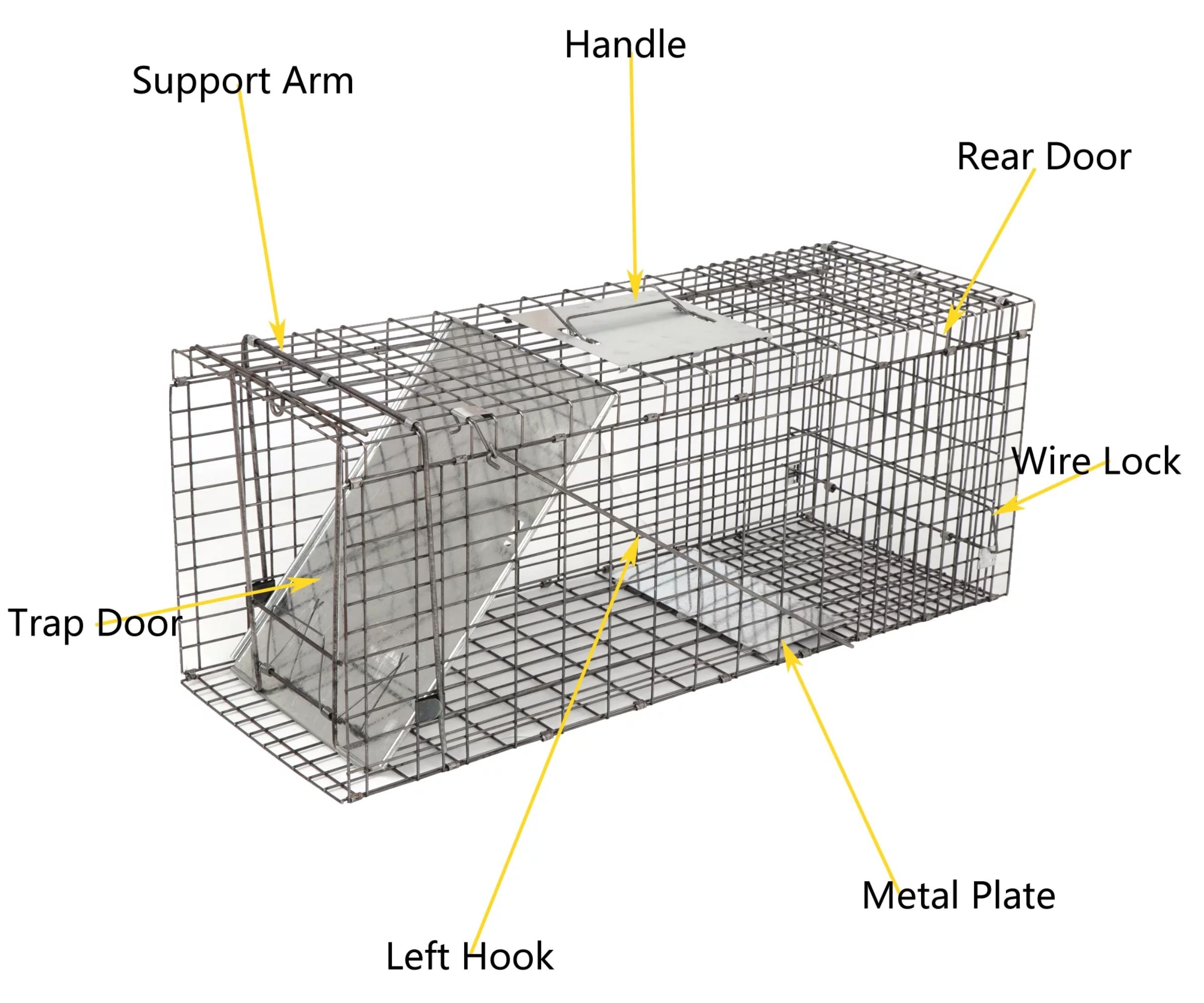How to get rid of rodents in the attic – 5 tips from pest experts
Learn how to humanely capture and remove these little pests from your home


Rodents setting up camp in your home is always a nightmare – they often target areas where they are likely to find a meal or those that are less commonly inhabited, like your attic. Unfortunately, for this reason, rodents are one of the biggest attic safety concerns.
When it comes to the methods of getting rid of rodents, such as squirrels, in the attic, it's important to prioritize the safety of your family, pets, and living environment. With the humane but effective removal of these home invaders in mind, our experts have explained the ways to get rid of them and prevent their return.
The process of getting rid of rodents in the attic may differ slightly from other areas of your home due to the attic's unique characteristics, however, these simple steps are the key to overcome your infestation issue.
How to get rid of rodents in the attic
For a number of reasons, it is essential to remove rodents from your attic as soon as you notice their presence.
'Rodents can cause significant damage to attics and items stored there. They carry potentially harmful bacteria and diseases,' explains Georgios Liakopoulos, pest control expert at Fantastic Pest Control.
'Rats and mice can chew on wood, electrical wiring, insulation, and other materials. It can lead to structural weaknesses, electrical hazards, and reduced insulation efficiency. A damaged wiring system can also cause short circuits, electrical failures, and fires.'
Here is how to get rid of pests from your attic and prevent them from coming back:
Design expertise in your inbox – from inspiring decorating ideas and beautiful celebrity homes to practical gardening advice and shopping round-ups.
1. Identify the type of rodents present

'Identifying the type of rodents you're dealing with is the first step towards effectively addressing the issue,' says Nicole Carpenter, president of Black Pest. 'Sometimes, you may not actually see the rodents themselves, but you can identify them through visual signs.
'For instance, if you notice small droppings that are about the size of rice grains, it's a telltale sign you have mice. Larger droppings may indicate rats. Gnawed wires or insulation are also clear indicators.'
Rodents such as mice, rats, squirrels, and raccoons are common attic invaders. Different types, for example getting rid of mice and getting rid of rats, will require different methods of removal.

Nicole Carpenter started working at Black Pest Prevention when she was in high school. She continued working there while attending N.C. State University and eventually became the CEO. Black Pest Prevention is a company that helps with pest control in Charlotte and serves both North and South Carolina.
Telltale signs your have a rodent infestation
Here are some telltale signs you may have a rodent infestation in your attic:
- Sounds in the Ceiling: One of the first signs you might notice is the sound of scurrying or scratching above your ceiling, especially at night. Rodents are nocturnal, so hearing these noises after dark can be a strong indicator of their presence.
- Droppings and Urine: Finding rodent droppings or wet spots from urine in your attic is a clear sign of an infestation. Droppings are usually small, dark, and pellet-shaped. Be sure to use gloves and a mask if you need to handle these, as rodent waste can carry diseases.
- Gnaw Marks: Rodents have teeth that grow continuously, compelling them to gnaw on wood, wires, and other materials to keep them trimmed. If you find gnaw marks on attic beams, wires, storage boxes, or insulation, it's a sign you might have rodents.
- Nests: Rodents build nests from shredded materials like insulation, paper, or fabric. If you come across these nesting materials gathered in a secluded corner of your attic, it's likely a cozy home for rodents.
- Footprints and Tail Marks: In dusty areas of your attic, you might find footprints or tail marks left behind by rodents. Using a flashlight at an angle can help make these tracks more visible.
2. Close all entry points

Start by sealing off any entry points the rodents may be using to access your attic. This will not only prevent their reentry but also will ensure you can properly trap and remove them from your property.
'Search the foundation for cracks, gaps or holes – a mouse can fit into a space the size of a dime, and a rat into one the size of a quarter,' explains Kristin Zanini, rodent excluder expert at Xcluder. 'Rodents have been known to gnaw through window screens, wood, fiberglass, plastic, drywall, and even concrete in pursuit of food and shelter.'
'Carefully check all openings where plumbing, gas, electric, or cable wiring enters the home or building. Be sure to inspect the roof line for any gaps. Ensure that shingles, ventilators, chimneys, and vent screens are all in place and undamaged. Make sure the chimney cap is secure as well,' continues Kristin.
Nicole Carpenter recommends blocking these entryways with materials like steel wool, expanding foam, or caulking:
'In addition to sealing entry points, you can reinforce them with rodent-proofing mesh. This sturdy material is difficult for rodents to chew through and provides an extra layer of protection against their reentry.'
3. Use live trappings

'Rodents can be removed by trapping, which is probably the most effective way of humanely removing them,' says Georgios Liakopoulos.
- The first step is to pick the right trap. Choose a live trap big enough for a squirrel to fit.
- Place the trap on a flat surface where a rodent won't be able to get around it.
- You need an appetizing bait to attract a wild animal like a squirrel. Peanut butter works well because it's sticky and not solid.
- Regularly check the trap and release the captured rodents far away from your property.
You can use this Zeny humane live trap cage at Walmart.
'You don't have to take rodents far from your home. If you've closed all the openings to your attic they won't be able to get back in,' adds Megan Wede, co-owner of Done Right Pest Solutions. 'Keep live trapping in your attic until you are confident all the rodents are out of the house.'
4. Consider professional extermination

If the infestation is severe or you are unable to handle it on your own, it may be necessary to call in a professional exterminator. They have the expertise and equipment to effectively remove all rodents from your attic humanely and prevent future infestations, as well as avoiding the one rat poison mistake when dealing with a wall infestation that can invite fetid odors, rather than dealing with the problem properly.
5. Take preventive measures

Rodent infestations may recur without preventive measures. Regularly inspect the attic for signs of activity and promptly address new entry points or potential attractants.
Reduce clutter in the attic space
'Reducing clutter can prevent rodents from living inside an attic space,' says Anthony Vallerand, supervisor at NW Pest Control. 'Rodents can use clutter to hide and stay warm in an attic during the winter months.'
Trim trees nearby
'Remember that entry points near the ground aren't the only ones at risk for rodent entry,' explains Kristin Zanini. 'Most rodents have no difficulty scaling siding, wires, or branches.'
'Trim all bushes, trees, and shrubs from touching or hanging over the home,' advises Anthony Vallerand. 'Rodents are known for climbing, so trimming these trees and shrubs will prevent them from reaching the home.'
Leave the light on
'Mice and rats are more active at night. When there's a light on, they feel uncomfortable,' explains Georgios Liakopoulos. 'Light up your attic with a flashlight, sensor, or a standing light. There's a good chance they will leave and look for another place.'
You can try these motion sensor flood light bulbs from Amazon.
Try natural deterrents
Certain natural remedies can repel rodents. Using peppermint oil to get rid of mice or other rodents is highly effective, as is vinegar since these scents are unpleasant to rodents and can help keep them away.
Distribute cotton balls soaked in peppermint oil or vinegar strategically throughout the attic to deter nesting. You can use this peppermint oil from Amazon.
After successfully squirrel-proofing your attic and getting rid of the rodents, it's important to thoroughly clean and sanitize the space. This will not only remove any lingering odors or droppings but also prevent the spread of diseases that rodents may carry. Dispose of droppings, contaminated insulation, and nesting materials properly, ensuring thorough disinfection to prevent disease spread.
If you're hearing noises there but it's rats, it could be mice. Learn how to get rid of mice in the attic for a full sweep.

Lola Houlton is a news writer for Homes & Gardens. She has been writing content for Future PLC for the past six years, in particular Homes & Gardens, Real Homes and GardeningEtc. She writes on a broad range of subjects, including practical household advice, recipe articles, and product reviews, working closely with experts in their fields to cover everything from heating to home organization through to house plants. Lola is a graduate, who completed her degree in Psychology at the University of Sussex. She has also spent some time working at the BBC.


